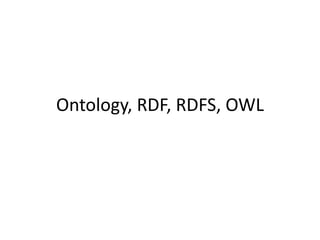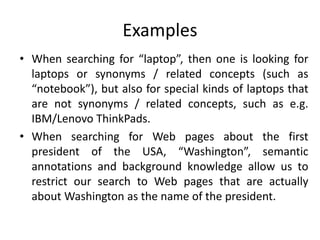The document discusses semantic technologies including ontologies, RDF, RDFS and OWL. It provides examples of using these technologies to semantically annotate web pages and objects. Key concepts covered include using URIs to identify resources, semantic annotations with properties and values, and extending vocabularies with RDFS and OWL constructs like classes, properties, and restrictions. The goal is to enable more intelligent search by understanding relationships between resources.













































